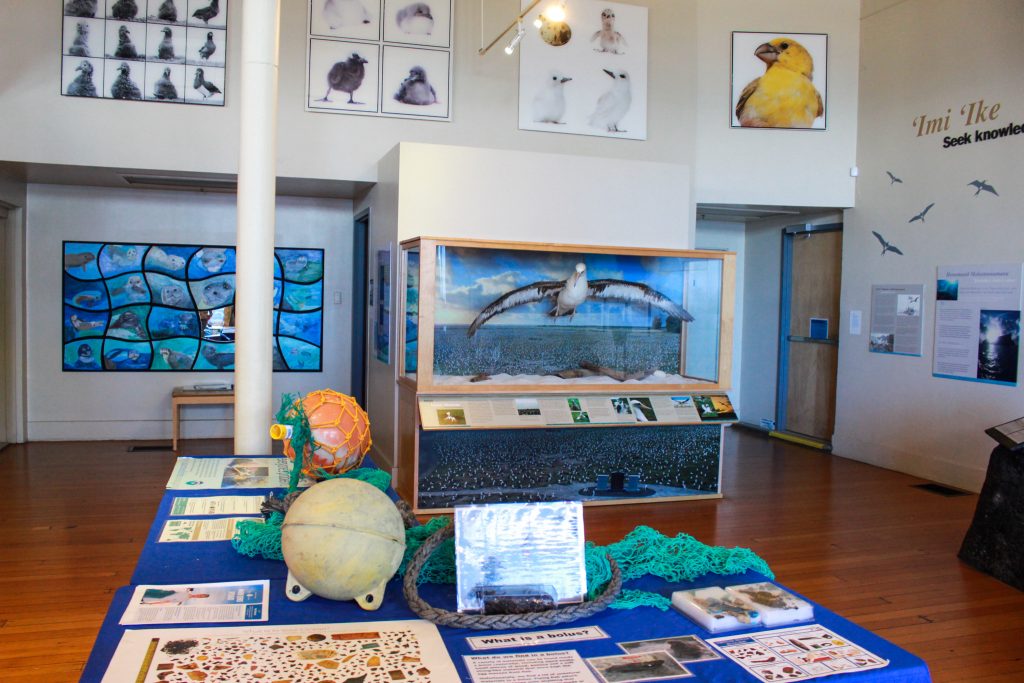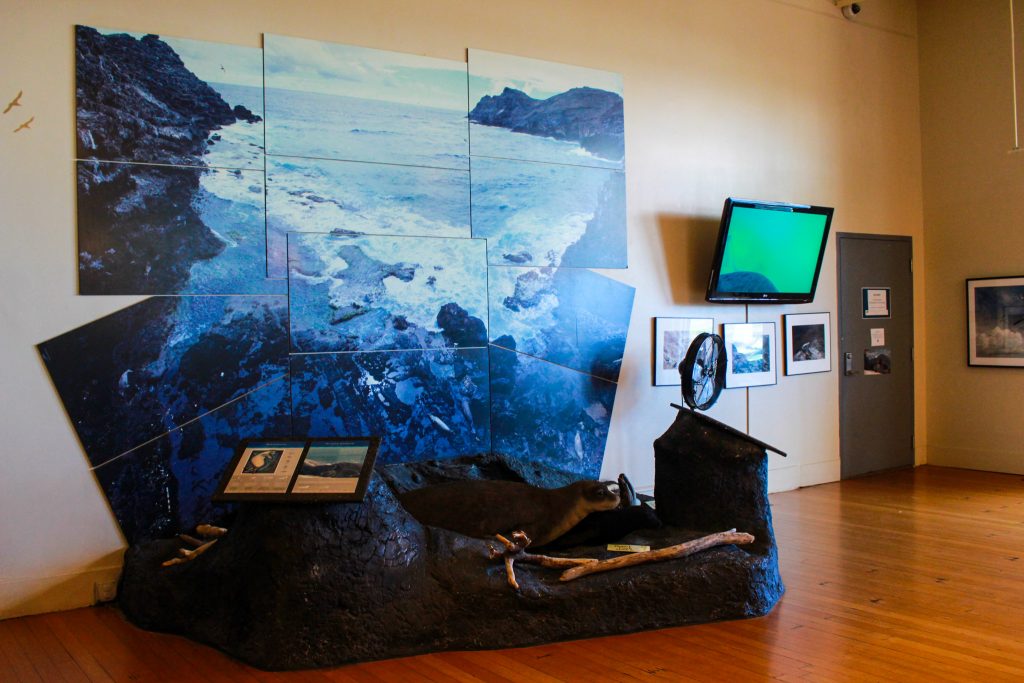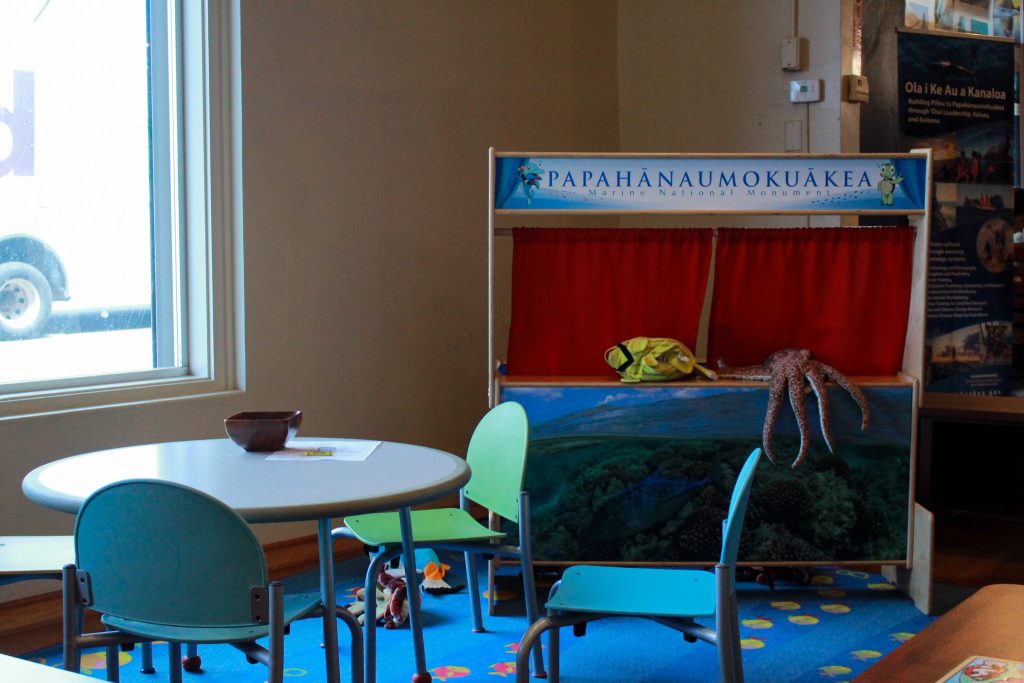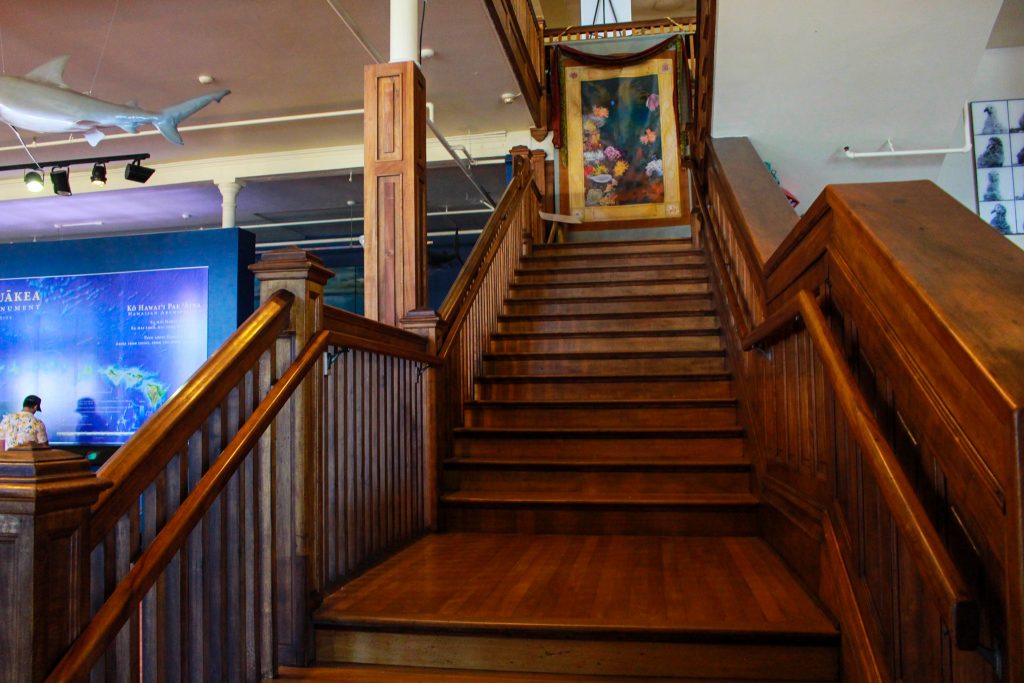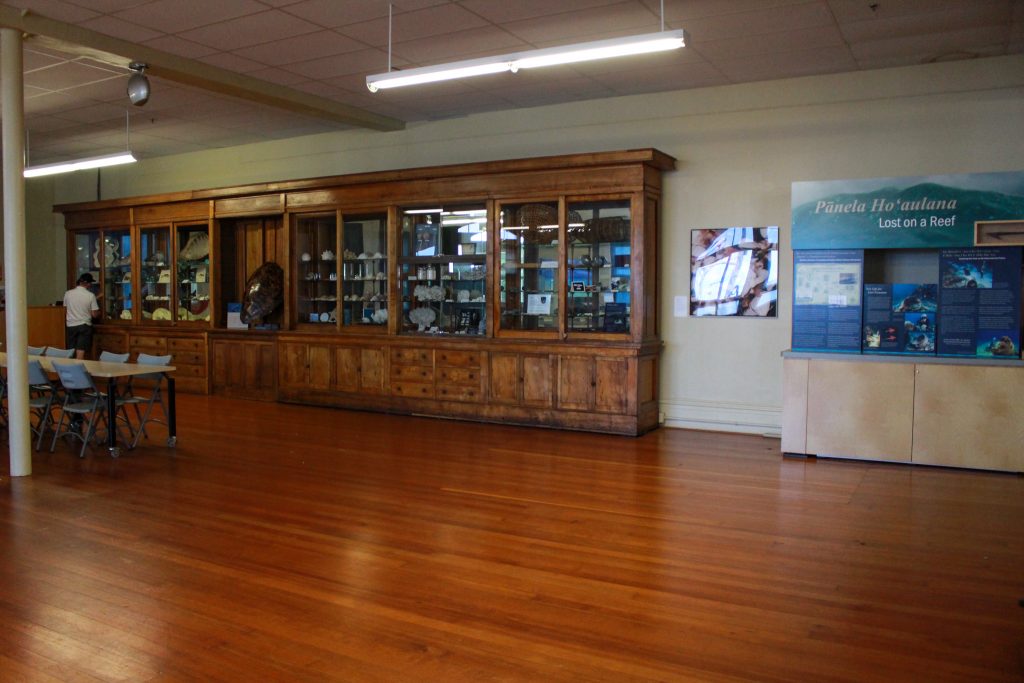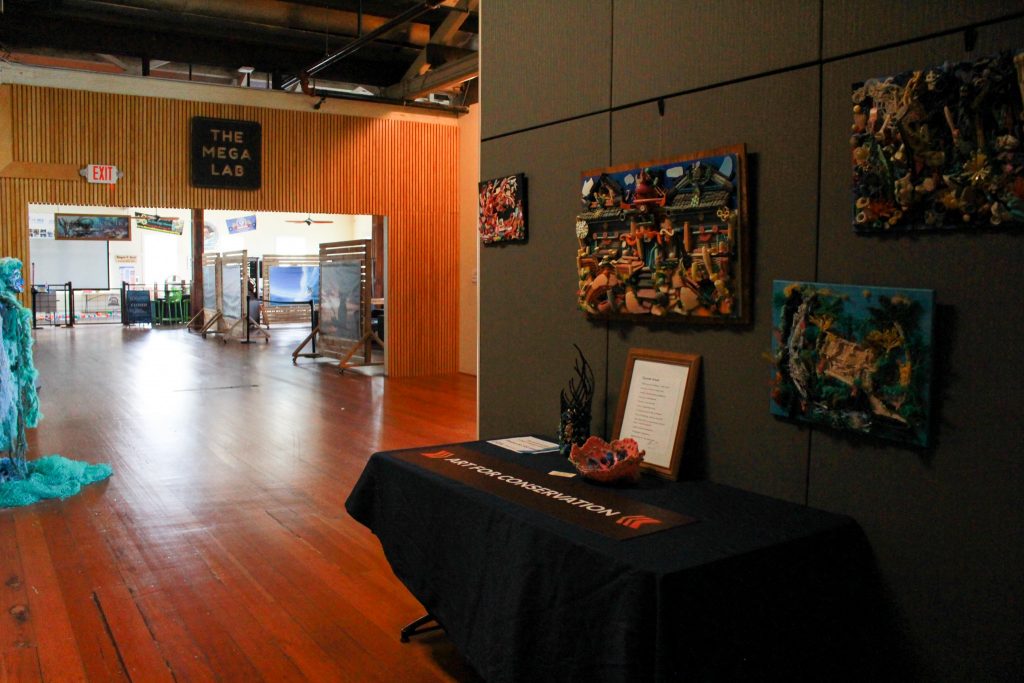Mokupāpapa Discovery Center great place to stop Saturday during Hilo’s World Ocean Day

About 12 years ago, staff from the Mokupāpapa Discovery Center learned a furniture store was closing in HIlo.
They thought the historic building would be a great place to relocate the Mokupāpapa Discovery Center and asked the late owner Fred Koehnen if it was possible.
“We told him our idea and I kid you not, he said, ‘Yes, I love it,’ and that’s all it took — a handshake,” said Andy Collins, Education Coordinator at the Papahānaumokuākea Marine National Monument.
Before Koehnen died in 2017 at 92, he said on multiple occasions that the historic building and the discovery center were a “match made in heaven.” He said it was a perfect way to give back to this small island community.
People used to go to the building to buy dining room sets and beds, but now they go there to see the island’s only public saltwater fish tank. The discovery center also features interactive displays and maps highlighting one of the world’s last protected coral reef areas: Papahānaumokuākea Marine National Monument.
A great day to check out the discovery center is on Saturday, when the Downtown Hilo Museum Square is hosting the 2nd annual World Ocean Day event in Kalākaua Park.
World Ocean Day is a United Nations’ recognized day of awareness aimed at encouraging people to come together towards restoring and protecting the oceans and ultimately the planet. The 2023 theme is “Planet Ocean: Tides Are Changing.”
The 20,000-square-foot discovery center is a popular gathering place for community events, including the location where public testimony was collected for the monument and marine conservation. It also is a safe place for local keiki.
The 3,500 gallon saltwater aquarium houses fish from the protected monument area. There are large maps and videos of the marine area, as well as recovered items from old shipwrecks and an extensive mural by Hawai’i artist Kahi Ching’s interpretation of the kumulipo, Hawaiian creation chant.

Justin Umholtz, education coordinator for discovery center, works with local schools and assists with educational activities. About half of the visitors are local families.
It is a “free place for folks of all ages to come to connect with the Northwestern Hawaiian Islands,” he said. “They get a chance to make connections and understand the values of these places and the cultural significance of these places.”
He also tries to expose local students to the variety of jobs in the marine conservation field, with the center becoming a pathway to find career success.
The center showcases an extensive marine debris display that demonstrates the amount of human impact on these remote areas that few humans can visit.

“You have to think there is nothing nearby for thousands of miles and this is what washes up ashore,” Collins said while pointing towards the display.
It shows microplastics and tons of fishing nets, which act like a bulldozer over the reef. There are small displays about what mother birds try to feed their young, raising awareness about the need to protect this area and reflect on the human impact on the natural world.

“The albatross pick up larger pieces of plastic, lighters, etc.,” Collins explained. “Flying fish attach their eggs to these and then they feed these, with the squid and the flying fish eggs, to their chicks.”
Upstairs of the museum is where public meetings are sometimes held. Currently there is a small canoe to represent Hawaiian voyaging, and a separate area that is home to the MEGA Lab, a robotics club, and an art display. The Kenyan K. Beals Community Robotics Center is a partnership with the Hawaiʻi Science and Technology Museum and provides space for robotics teams to train, and robotics events for the public on Saturdays.

The MEGA Lab is a partnership between the Discovery Center and the MEGA Lab at the University of Hawaii at Hilo. Complete with 3D visual displays and live footage of ocean reefs, the presentations encourage mixing technology and conservation to talk about and connect with our oceans.

The name Papahānaumokuākea commemorates the union of two Hawaiian ancestors – Papahānaumoku and Wākea – who gave rise to the Hawaiian Archipelago, the taro plant and the Hawaiian people.
Papahānaumokuākea Marine National Monument is the largest contiguous fully protected conservation area in America, and one of the largest marine conservation areas in the world. It encompasses 582,578 square miles of the Pacific Ocean, an area larger than all the country’s national parks combined.
The Northwestern Hawaiian Islands Marine National Monument was established by a presidential proclamation in 2006.
The region’s diverse habitats and pristine reefs provide a haven for a variety of fish, invertebrates, seabirds, sea turtles, and marine mammals – many found nowhere else in the world – and help to monitor the effects of climate change.
Numerous threatened, endangered, and depleted species thrive in the area, including green and hawksbill sea turtles, pearl oysters, giant clams, oceanic whitetip sharks, humphead (Maori) wrasse, bumphead parrotfish, spinner dolphins, and melon-headed whales.
Information was added to this story to properly attribute The Kenyan K. Beals Community Robotics Center and its partnership with the Hawaiʻi Science and Technology Museum.
Sponsored Content
Comments








